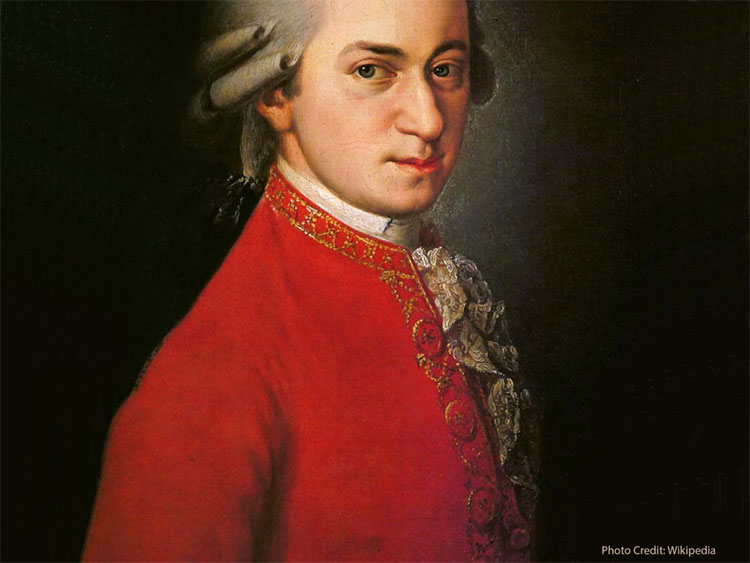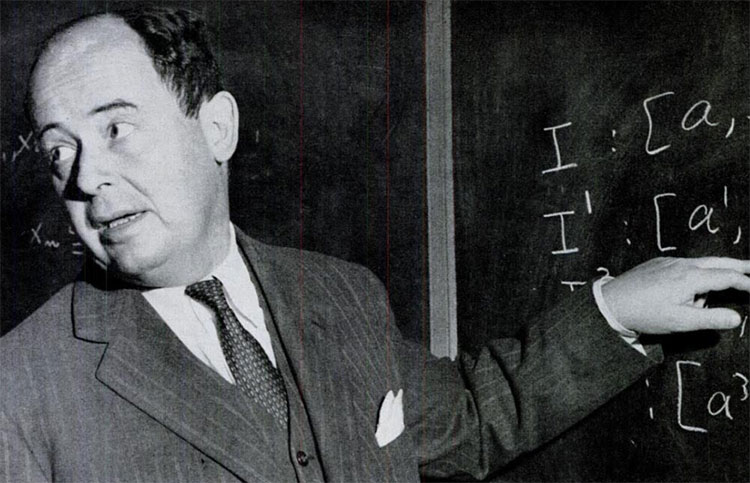The child genius makes adults admire
They are famous geniuses from a very young age and from childhood they have done things that not many adults can succeed like them.

Wolfgang Amadeus Mozart is an outstanding prodigy, knows how to play a harpsichord from the age of 4 and composes simple music at age 5. When he was 7 years old, the Mozart family made their first tour to prove Mozart's extraordinary musical ability and his sister Maria Anna, who also had special talents. So there is no shortage of anecdotes about Mozart's ingenuity, memory and musical creation.
John von Neumann

Some people have more spiritual strength than they know what to do with. Biographers report that at the age of 6, Hungarian-American mathematician John von Neumann was able to toy with his father in classical Greek. And this young prodigy also memorizes pages from the phone book and answers questions about names, numbers and addresses or just reading pages from top to bottom. As an adult, von Neumann was considered to be an outstanding mathematician in his era, responsible for major contributions in mathematics, physics, economics and computer science.
Sor Juana Inés de la Cruz

The extraordinary ability doesn't always appear where you expect it to be. In 1648 Juana Ramírez de Asbaje was born in the town of San Miguel Nepantla in Mexico. She soon revealed her intellectual potential, being poisonous since she was 3 years old, but her gender and her family were financially restricted, making her unable to study officially. Finally, Cruz was sent to live with his grandparents in Mexico City, where she had the right to enter and exit a library. She read voraciously, learning Latin in about 20 lessons.
She wrote her first poem when she was 8 years old. News of Cruz's extraordinary intelligence spread, and when she was 16, she went to the Spanish parish court. To showcase the miraculous wisdom of Juana, the person in charge held a public contest, in which a group of about 40 professors asked her about their field of knowledge.
Cruz's depth and breadth of knowledge surprised the viewers. Desiring to have more books to read, in 1669 Juana lived fully in a monastery, officially becoming Sor Juana Inés de la Cruz. And continue to compose poems, plays, and philosophies. So far, Cruz is remembered as one of the most important writers of the Baroque period of Mexican literature.
Srinivasa Ramanujan

One of the greatest self-taught mathematicians of all time, Srinivasa Ramanujan, grew up poor in Kumbakonam, India. An outstanding student known for his special memory, Ramanujan reached the highest mathematical level beginning in 1903, at the age of 16.
With a passion for mathematics Ramanujan approached mathematicians in England and in 1914 Professor Hardy persuaded Ramanujan to Cambridge. Later, Ramanujan published many important studies on mathematics and contributed greatly to the world mathematics. He was elected a member of the Royal Society in 1918.
Stevie Wonder

Despite being blind from birth and growing up in poverty, Stevie Wonder (Steveland Judkins Morris) became an adept musician from an early age, learned to write music, sing and play piano, organ, ensemble and drum.
In 1962, when he was 12 years old, he started recording music and performing professionally under the name Little Stevie Wonder. He quickly became a serious musician, combining creative music composition and mastering various musical styles including rhythm and blues, soul, funk, rock and jazz. By the 21st birthday, he wrote or sang over a dozen successful songs. He was enrolled in the big name of Rock and Roll in 1989, when he was 38 years old.
Blaise Pascal

Mathematician, physicist and 17th-century French philosopher Blaise Pascal did not learn mathematics as a system when he was a child. He was educated exclusively by his father, Étienne, a mathematician, who decided that it was best for children to master Greek and Latin first and then move on to mathematics and science.
At 12 years old, Pascal had very important mathematical formulas and interesting discoveries. Realizing his son has extraordinary talent, Etienne began to introduce mathematical concepts to him. About 3 years later, Blaise published her first original mathematical work.
2 years later, Blaise invented a mechanical addition and subtraction device. It was the first computer to be produced in significant quantities and the first computer to be used for business. In the 1640s and 50s, Pascal claimed to be one of Europe's greatest scientific and mathematical minds.
Judit Polgár

Judit Polgár is an interesting case. Her father, László, an educational psychologist, was convinced that special mental ability was the result of fewer innate talents than proper training. He claimed that he could turn any child into a prodigy and even wrote a notebook called Raise a Genius!
His idea might sound very odd at the time, but with his pedagogical vision all three of László's daughters became chess prodigies. Growing up in a constant chess practice environment, the Polgár sisters shook the world of male dominated chess. Susan, her eldest daughter, Susan, became the world's top ranked female player at the age of 15. But she was soon overshadowed by her youngest sister Polgár, Judit.
In December 1991, 15-year-old Judit became the youngest player ever to gain a master's degree, Bobby Fischer's record breaking set in 1958. In 2005, she ranked eighth in the rankings of players. Top chess, becoming the only woman who ever reached the top 10.
- The truth about the connection between genius and autism
- You will be surprised with the special equipment of the 11-year-old inventor
- A puzzle for children makes many adults kneel down
- Geniuses in childlike figures
- Who is a liar genius that makes the whole country believe her?
- History of genius concept
- Methods of nurturing children happily in a scientific way
- Brain organization changes when children become adults
- Many drugs for children are tested only on adults
- How is genius different from ordinary people?
- Life is full of events and the mysterious disappearance of a physical genius
- China plans to 'produce' a series of child prodigies?
 The most famous scientific failures in history
The most famous scientific failures in history Mysterious genius mechanic and the machine froze time
Mysterious genius mechanic and the machine froze time The son carries the 'bad gene' of genius Albert Einstein
The son carries the 'bad gene' of genius Albert Einstein Isaac Newton
Isaac Newton